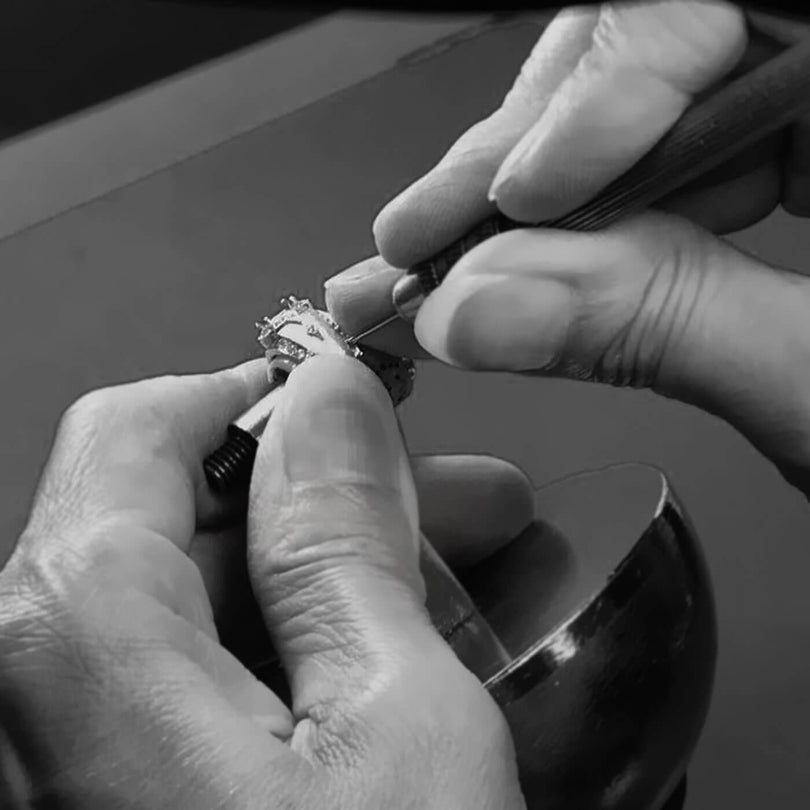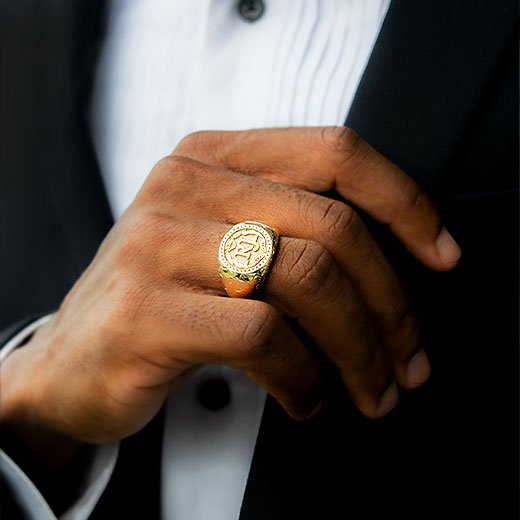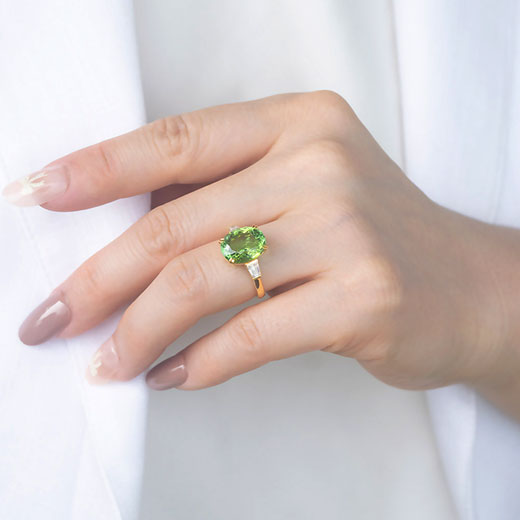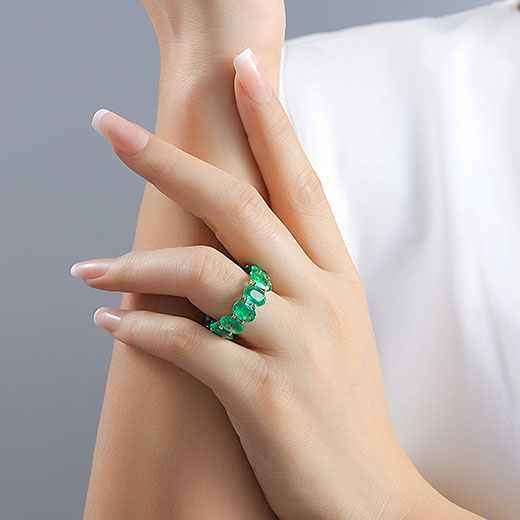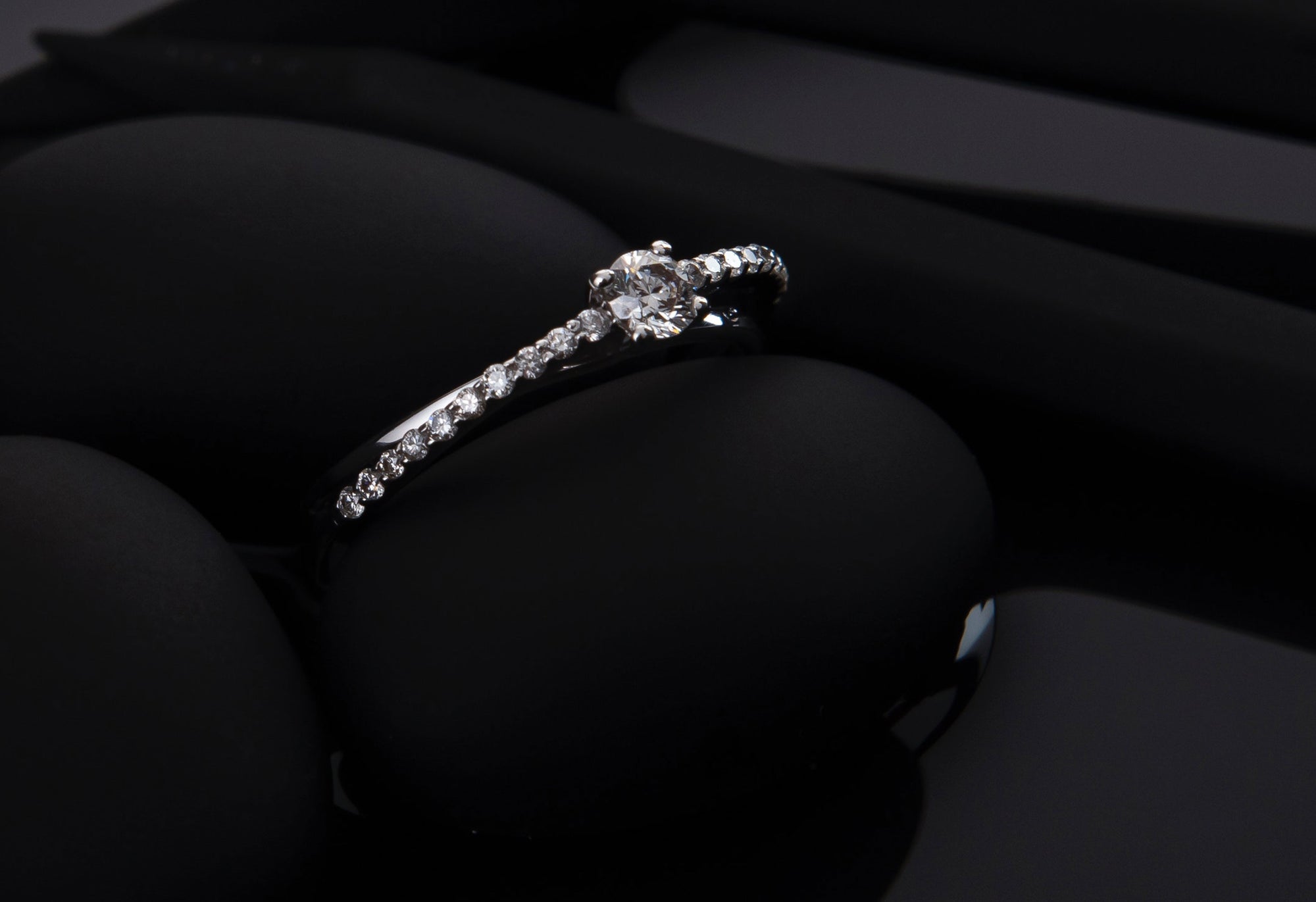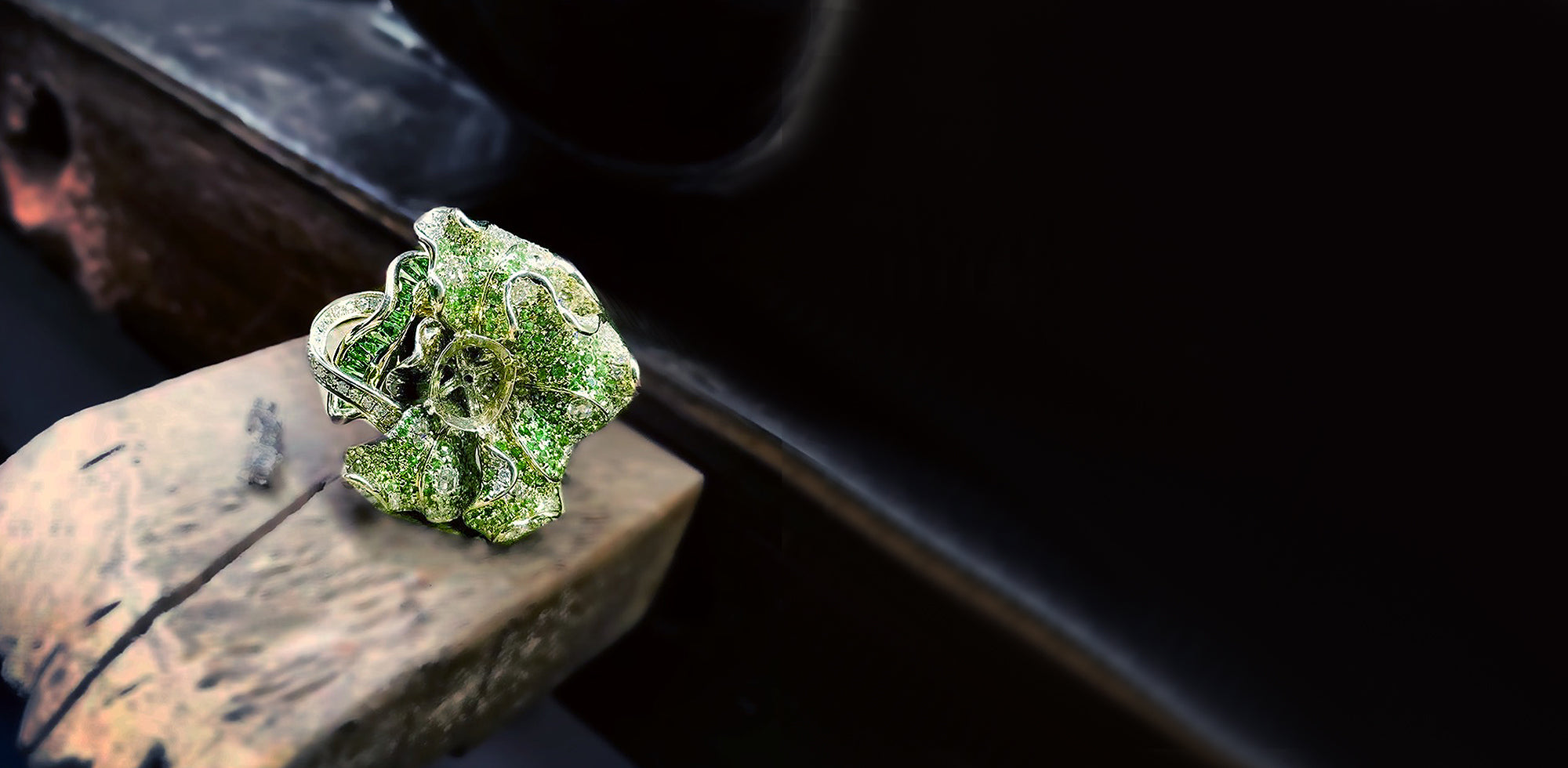Overview
Diamonds have an ancient legacy of being coveted as magnificent objects of desire. Pliny, a Roman scientist, declared in the first century AD, "Diamond is the most valuable, not just of precious stones, but of all things in this world."
Before it reaches the jeweler's display case, a diamond must go through a number of processes. It originates deep inside the earth under conditions of high heat and pressure. It is aggressively propelled upward until it reaches or nears the earth's surface. Nature or man forces it out of its hiding spot. The Diamond is then cleaved, cut, and polished so that its inherent beauty shows through.
Diamond History and Lore
Diamonds have an ancient legacy of being coveted as magnificent objects of desire. Pliny, a Roman scientist, declared in the first century AD, "Diamond is the most valuable, not just of precious stones, but of all things in this world."
Before it reaches the jeweler's display case, a diamond must go through a number of processes. It originates deep inside the earth under conditions of high heat and pressure. It is aggressively propelled upward until it reaches or nears the earth's surface. Nature or man forces it out of its hiding spot. The Diamond is then cleaved, cut, and polished so that its inherent beauty shows through.
INDIA
The world's fascination with diamonds began in India, where diamonds were extracted from the country's streams and rivers. According to some historians, India started trading in diamonds in the early 4th centuries Bc. The country's resources produced restricted amounts for a relatively small market: India's upper classes. However, this gradually altered. Indian diamonds, along with other exotic goods, made their way to Western Europe via caravans traveling to Venice's medieval marketplaces. Diamonds had become trendy accessories for Europe's nobility by the 1400s.
BRAZIL
As India's diamond resources began to dwindle in the early 1700s, Brazil arose as a significant supplier. Diamonds were found in gold miners' pans as they sifted through the gravels of nearby rivers. Brazil controlled the diamond market for more than 150 years after reaching its full potential.
While sources shifted, the diamond market evolved on its own. By the late 1700s, the old governing classes, the primary buyers of diamonds, were in decline. Political upheavals such as the French Revolution resulted in shifts in wealth distribution.
SOUTH AFRICA
The 1800s saw an increase in wealth in Western Europe and the United States. In the late 1800s, explorers discovered the first large South African diamond mines, even as diamond demand grew.
Modern Diamond Market and De Beers Consolidated Mines Ltd.
The contemporary diamond market truly began on the African continent, with the discovery of diamonds in Kimberley, South Africa, in 1866. Cecil Rhodes, an entrepreneur, founded De Beers Consolidated Mines Ltd 22 years later, in 1888. By 1900, De Beers controlled an estimated 90% of the world's raw diamond output through its mines in South Africa.
Many parts of the diamond market were impacted by the South African sources. This was particularly true when diamond mining expanded further below and farther from the surface. Because of the high prices and limited returns, the new sources compelled the development of efficient mining methods. They generated the demand for improved marketing. They also contributed to advancements in cutting and polishing, which boosted productivity, lowered prices, and improved the beauty of finished stones.
In the 1870s, annual rough diamond output was considerably below a million carats. By the 1920s, the value had risen to about 3 million carats. Fifty years later, annual output neared 50 million carats, and eventually surpassed 100 million carats per year in the 1990s.
South Africa, Zaire (now called the Democratic Republic of the Congo), and the former Soviet Union were the world's largest rough diamond producers toward the end of the 1970s. In the 1980s, Russia and South Africa's output of higher-quality diamonds stayed largely stable, while Zaire's production of lower-quality diamonds more than doubled.
Botswana
In 1982, a highly productive new mine in Botswana increased global supply. The Jwaneng mine, a productive source of high-quality diamonds, increased Botswana's output to the point where the country ranked third in total diamond recovery and second in diamond value. De Beers agreed to acquire the mine's production from Botswana's government, and Botswana set out to establish its very own diamond-cutting industry.
Australia and Canada
With the discovery of new sources in Australia in 1985 and significant new discoveries in northern Canada in 2000, global diamond mining increased substantially.
Expansion of Cutting Centers
The market probably altered as much after 1990 as it did following the discovery of diamonds in South Africa in 1866 and the foundation of De Beers. The 1990s saw the introduction of interesting new sources as well as the rapid expansion of several cutting centers. All of this was taking place as the world economy swung drastically.
De Beers, being a key player in the trade, had to adapt as well. Today's De Beers has little similarity to the De Beers of 1989. The company's function as a custodian of diamond supplies was significantly decreased. Diamonds no longer enter the market through a single conduit from De Beers; instead, they enter through several channels.
However, not everything changed. Diamonds continue to move from mines to cutting centers, and then to retail buyers, regardless of the route they take.
Conclusion
The beauty of diamonds has been recognized for ages, but there was little scientific information about them before the 20th century. Diamond knowledge has developed significantly since then, thanks to studies by chemists, physicists, geologists, mineralogists, and oceanographers. Scientists have learnt a lot in the last 50 years about how diamonds develop and how they get to the earth's surface. This understanding has made it simpler to anticipate the sites of fresh diamond finds.


